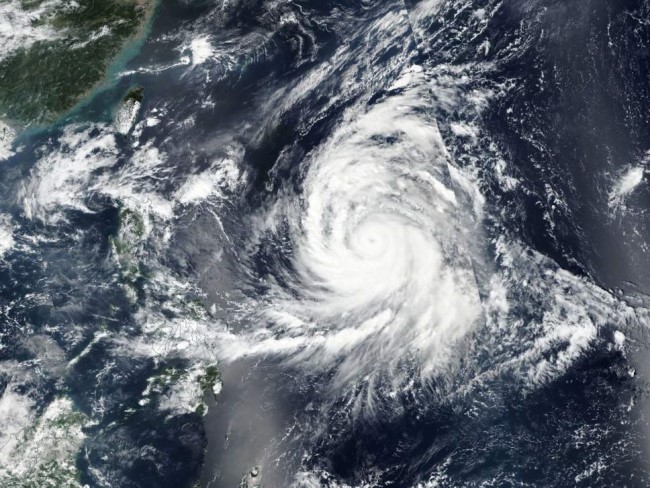| |
 |
|
| ▲ : A satellite picture of Typhoon Kong-rey passing the Philippine Sea in October (Photo=NASA) |
Summer this year brought record high temperatures to Korea. However, when the suffocating heatwave receded, something else was waiting around the corner: typhoons. One after another, the typhoons came. Typhoon Kong-rey, the 25th of the year, arrived in early October and brought wind speeds of up to 24m/s to Japan and Korea.
Typhoons are tropical storms characterized by a low-pressure center with wind speeds of 17m/s or more. They mostly occur in the western Pacific. Typhoons are the same natural phenomenon as hurricanes and cyclones. About 80 typhoons, hurricanes, and cyclones occur annually.
Because typhoons bring strong wind, heavy rain, and tidal waves, they can incur an enormous amount of damage in a short period of time. According to NASA, a typhoon releases 10,000 times more energy than a nuclear bomb.
Meteorological records say the most historically damaging typhoons generally occurred in late August to September. Typhoon Rusa, a typhoon that engulfed the Korean Peninsula in early fall of 2002, is one such example. This typhoon recorded daily rainfall of 870.5mm, bombarding the peninsula with powerful water bombs. 246 people were reported lost or dead due to the typhoon and the cost of property damage was put at 5.1 trillion won — the same amount of money that Korea spent on R&D that year.
In 2003, Typhoon Maemi struck the Korean Peninsula. It caused 141 people to be recorded missing or dead and loss was put at 4.2 trillion won. According to the Korea Meteorological Administration (KMA), the most disastrous typhoons to have hit Korea are Rusa, followed by Maemi, then Bolaven, Tembin, and Janis. Meteorologists from the KMA agree that typhoons will become more frequent and possibly stronger in the future.
Why? Climate experts claim global warming and rising sea levels could be the cause.
Typhoons often occur under high temperatures and become stronger as they absorb more steam. The warmer the oceans become through global warming, the more frequently typhoons could occur.
In Korea, a research team at Ulsan National Institute of Science and Technology predicted how many typhoons are likely to occur under the assumption that the current level of greenhouse gas emissions stays the same.
The study found that there could be a five percent increase in the frequency of typhoons that form in the southern part of the South China Sea and the northern part of the Phillippine Sea. This would see the yearly total rise from the current average of 19.7 to around 20.7. This could see the number of typhoons that affect the Korean Peninsula increase by 17%.
| |
 |
|
| ▲ Typhoon Jebi occurred in September landed on Osaka, Japan. A car on the highway is knocked down by the wind (Photo=YouTube screenshot) |
When the surface of the sea becomes warmer, typhoons become stronger. In 2017, Hurricane Harvey saw record-high rainfall in Texas, USA. The 1000mm of cumulative rainfall ended up taking 70 lives. The National Weather Service said the one-degree increase in the temperature of the Gulf of Mexico’s sea surface is what amplified Harvey’s power.
The National Center for Atmospheric Research in the United States completed a test in May that substituted the data of the most recent 22 hurricanes with the data from hurricanes that occurred in the late 20st century. The result demonstrated that the more recent hurricanes are generally stronger, move slower, and bring heavier rainfall. The most common attribute was the increase in rainfall. The NCAR predicts the average amount of rainfall brought by a hurricane will increase by around 24-percent in the future.
Kerry Emanual, an American professor of meteorology, analyzed the data of the Earth’s sea surface temperature and the occurrence of hurricanes. According to his calculations, a one-degree increase in temperature leads to a five-percent increase in wind speed.
Typhoons are necessary phenomena. They redistribute the heat energy that is focused in the region near the equator. Also, they are crucial for maintaining the ecosystem in the sea and on land.
However, if they become too powerful, typhoons may cause immense damage to human lives. Experts recommend that we reduce the amount of CO2 we emit in order to stop global warming and minimize the strength and damage of typhoons.
In the end, all the efforts currently being discussed to prevent global warming, such as the reduction of plastics, eco-friendly cars, and greenhouse gas emission trading, are all related to these calamitous climate phenomena like typhoons.
|





















